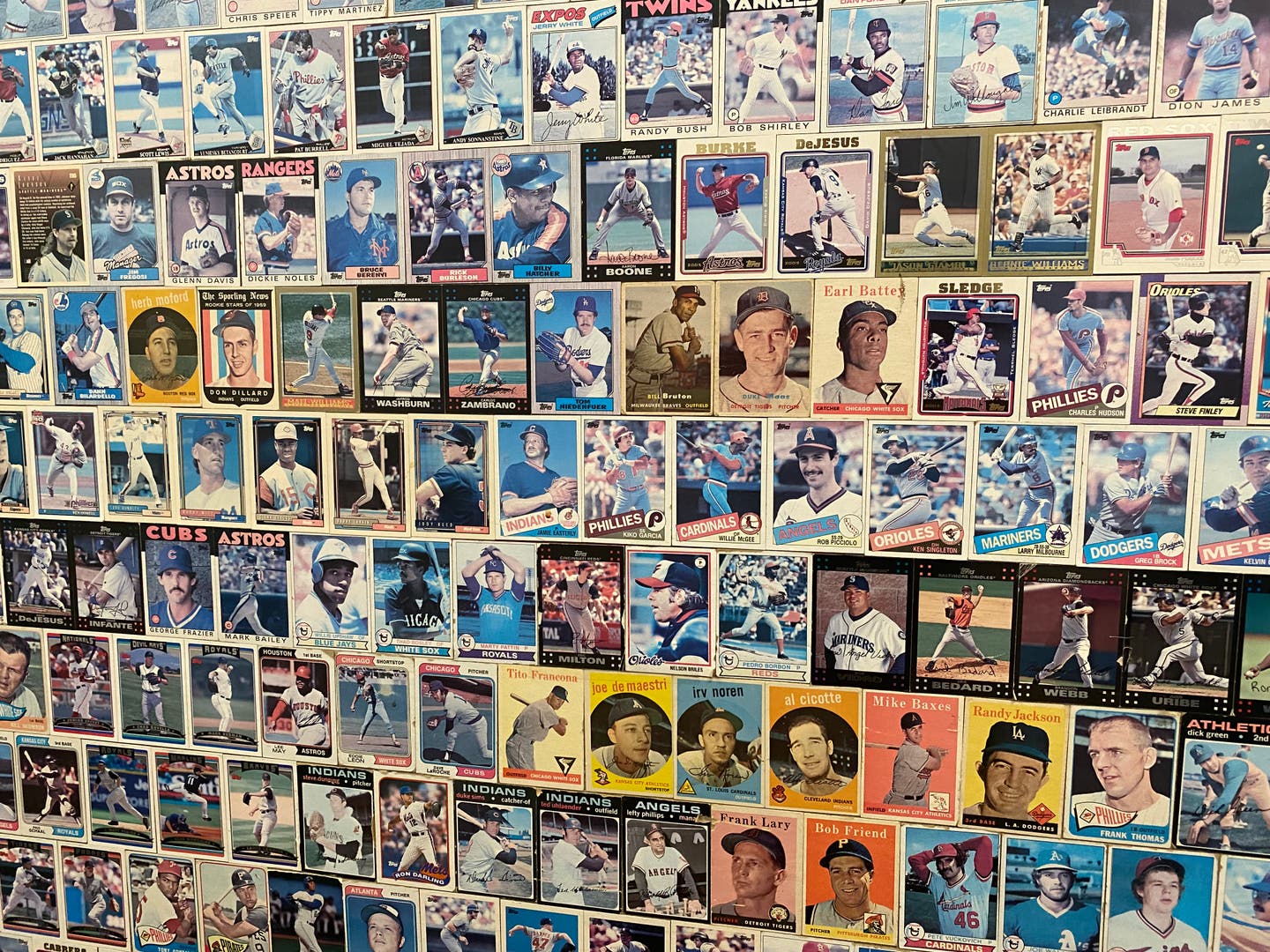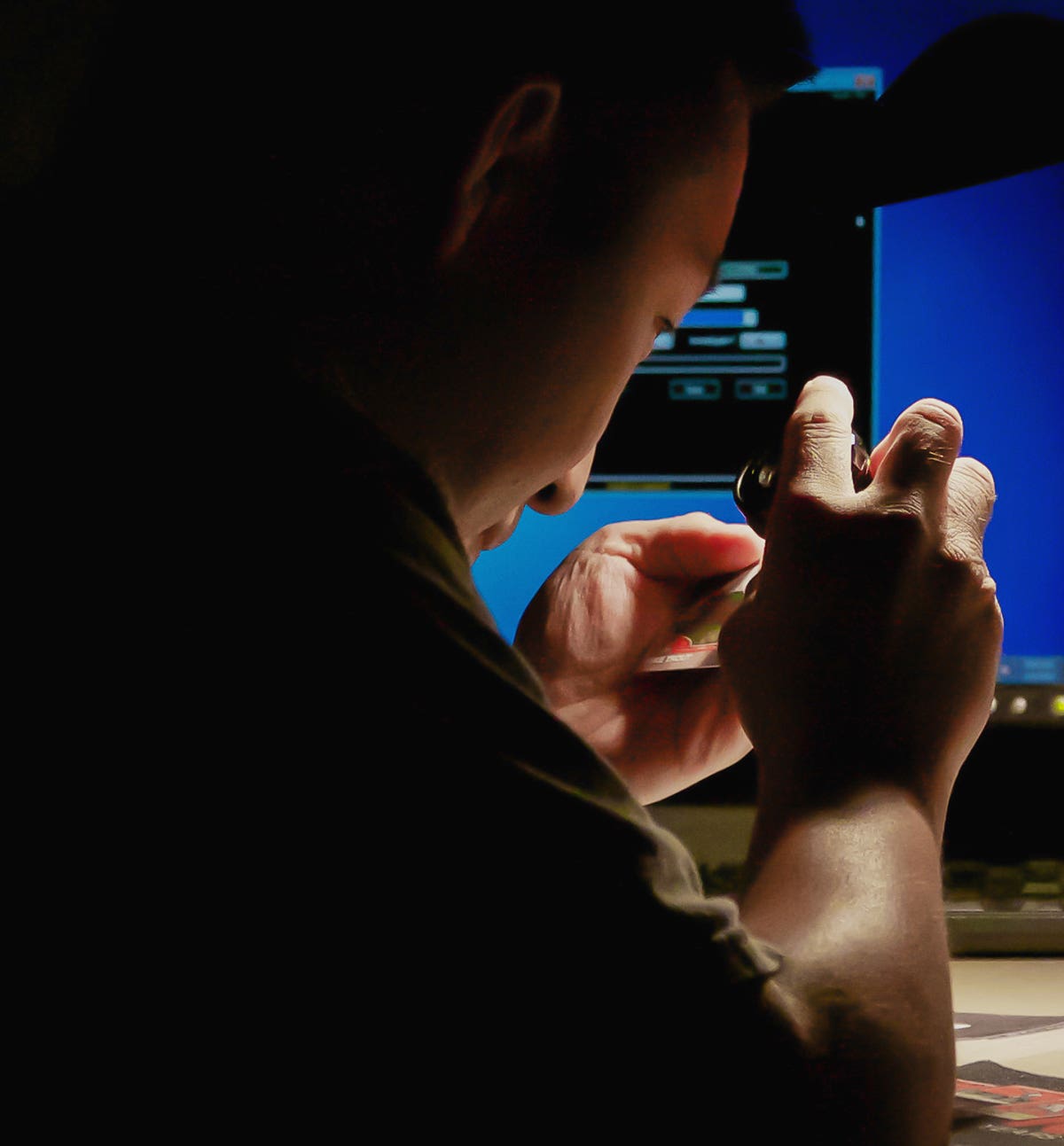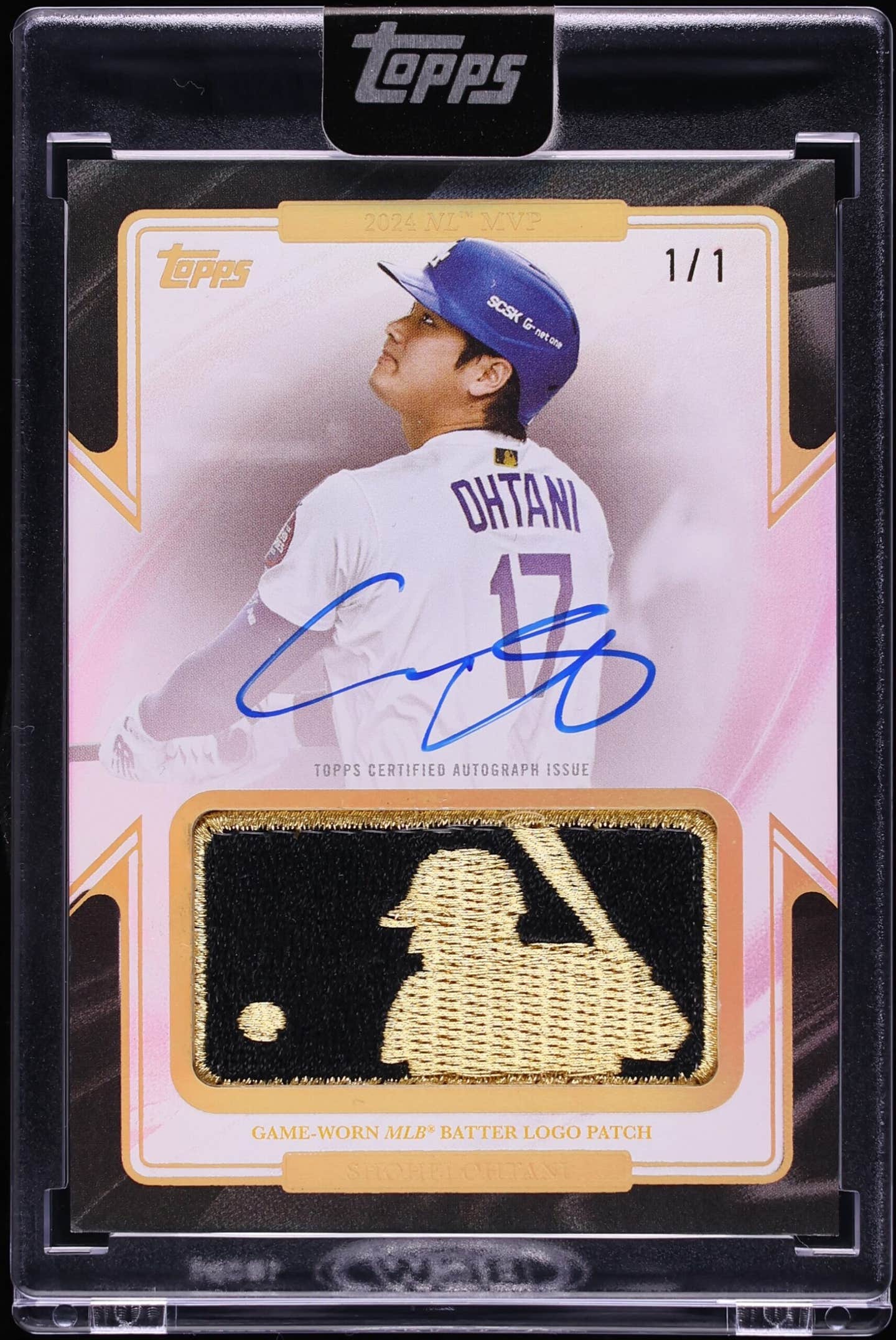
News
Baseball cards, historic memorabilia steal the show at MLB Network
SECAUCUS, N.J. — Seventeen steps, that’s all it takes.
Any visit to MLB Network Studios is an expedition in anticipation, the chance to marvel at the compound’s pristine studios, to be overwhelmed by the sheer amount of computing power editing, sorting and sending out baseball morsels across the country, and the very good chance that you just might see a baseball Hall of Famer walking through the building.
But 17 steps past the front lobby’s security desk, a hallway opens on the left. It’s a magical hallway, full of wonder and nostalgia and nostalgia and wonder. Has anyone ever walked through this hallway for the first time without stopping to gawk? It’s a fair question.
From the floor to the ceiling, the entire wall is covered with baseball cards. Beautiful, glorious baseball cards.
The wall of cardboard gold has vintage Topps cards dating back into the 1950s—no ’52 Topps Mantles, though—and it has cards well into the 2000s. There are 25 rows of vertical cards, and a 26th row of horizontal cards up top because, well, another row of 3 1/2-inch-high cards wouldn’t fit, and an empty space just wouldn’t do.
If you weren’t quite sure what to expect in your first 17 steps into MLB Network, the hall of cards leaves no doubt. You’re walking through a space with millions of baseball stories, leading to the place where all they do is tell baseball stories all day, every day.
Yes, the halls and walls at MLB Network headquarters are magnificent. There’s a wall with signatures of just about every guest who has appeared on one of its shows, and there’s a wall with only baseball Hall of Famers who have visited. There are poster-size ballplayer photos everywhere.
But if you want to understand the heartbeat of this building, the passion of the folks who drive this nonstop baseball content machine, you have to tear your gaze away from the walls and halls. Look at the desks. Over in the research department, there’s a desk with 41 baseball bobbleheads, and at least another 20 in boxes under the desk.
Baseball cards are everywhere. There’s a desk with two sealed boxes of 2010 Topps Update, a 2010 Bowman box and a set of 1990 Baseball Coins, with the color on the box faded. Walk around and it’s hard to resist picking up a random stack and rifling through. Some stacks are organized, some are not.
In Greg Amsinger’s office, they are not. Amsinger has been MLB Network’s primary host from the very beginning of the network, back in 2008. On his desk, he has one computer screen, four coffee mugs—two holding baseballs, one with a thin snap-case of cards (with a 1984 Fleer Willie Randolph on the back)—and 29 different stacks of baseball cards, all of various heights and resting at different angles.
Amsinger isn’t the least bit ashamed of the haphazard “organization” on his desk. Even that tells one of his favorite stories.
“They’re all messed up because of kids that come in my office on tours, and I'm not even kidding,” he says with a laugh. “I let them play with the cards. They mess them up. I've got product down here, and I give them all baseball cards, three or four packs each. I just want them all to have baseball cards. I’ve been spreading that love.”
And kids taking tours aren’t the only ones who revel in Amsinger’s interactive desk.
“There's nothing better than sitting in here and watching one of the former players grab a stack,” he says. “They go through the stack and they’re like, ‘I know this guy. He was my roomie in Albuquerque.’ They’ve got all these stories on every guy. That’s why the baseball card thing is the foundation of what I bring here. I love this.”
SPECIAL TREASURES
But it’s not just baseball memorabilia on display. It’s obvious the collecting passions in the building are not just limited to one sport. In the NHL wing—the building hosts NHL Network, too—there are signed pucks and jerseys and, yes, plenty of hockey cards. Lots of desk are packed with Star Wars action figures. Funko Pop dolls are all over the place. There’s a desk you’ll be very afraid to accidentally bump into, with Hot Wheels cars delicately arranged.
In his office—the one with the giant signed photo/poster of Bill James in a frame out front—MLB Network host Brian Kenny has two of his prized possessions, boxing gloves signed to him by legends Joe Frazier and Marvelous Marvin Hagler.
“I got to know these guys when I would host shows with them on ESPN,” Kenny says.
The other theme in Kenny’s room is Cooperstown. Now, of course, he hosts the annual induction ceremony every summer, and he hosts the MLB Network show that reveals the BBWAA Hall of Fame voting results. But Kenny’s connection to that magic city in upstate New York runs much deeper than that. Want proof?
Up on the wall, Kenny has a big frame with 20 smaller pictures arranged inside, the type of pictures with the rounded edges showing their age and importance. Nine are of his first trip to Shea Stadium as a kid, with the view from their seats in the upper deck. The other 11 show exactly why Kenny has such a passion for Cooperstown.
“My mother made this for me for Christmas, years ago,” he says. “This was my first visit to the Hall of Fame. That’s me standing next to Babe Ruth’s locker, and one by Lou Gehrig’s locker. That's my sister in that one. How hilarious is this? I’m like 8 years old.”
Seeing 8-year old Brian there in his striped shirt, posing in front of the iconic Baseball Hall of Fame plaques in the gallery, you start to understand exactly why being so very involved with the events in Cooperstown now means so much to him.
Around his office, Stan Musial is a regular on display. Kenny got to know Musial during his trips to Cooperstown in an official capacity, dating back to his days working local news in Kingston, N.Y. Same thing with Yogi Berra, Al Kaline, Hank Aaron, Brooks Robinson and so many others.
Also See: Top MLB rookie cards to chase in 2024
Looking around and talking about what’s on display, he can’t help but remember stories.
“I'm having lunch one time in Cooperstown and Al Kaline walks over and just starts talking baseball, like, ‘So, Brian, I understand you …’” Kenny pauses for a moment. “It took me a few minutes to lock in because I’m like, ‘Al Kaline just wandered over to my table to talk baseball with me. He knows who I am.’ I'm like, this is crazy. The ultimate.”
DEEP CONNECTIONS
And that’s a theme in the building, the deep connections to the collections.
Marc Caiafa is MLB Network’s Senior VP of Production. His office is incredible. The first thing you notice is the dozens—the exact number has to be in triple digits—of credentials hanging on his bookshelf, draped over bobbleheads of his beloved Mets and obscuring the contents of the top section completely. He has baseball press pins, dozens on a board and more in their cases on the shelf. Both the credentials and the pins, he was given when covering events for MLB Network.
Next to the bookshelf is the actual physical replica of the ballpark camera that’s been installed in every stadium for years. To sell teams on the idea—and figure out the logistics—Caiafa packed up and carried that thing with him across the country.
He has a poster of the 2004 Red Sox World Series title. Not because he’s a Red Sox fan—Mets, remember?—but because he has a pretty cool story to go with that poster.
“That was still my best two- or three-week period in baseball,” Caiafa says. “I was with them the whole time. I got to know [Kevin] Millar and those guys. The wire Millar wore when he famously said, ‘Don’t let us win tonight,’ when they were down 0-3, I put that on him. I said, ‘Do you mind wearing it just one more night?’ He didn’t care. He had fun with it.”
Next to that poster is a small, black-and-white photo that means just as much. It’s his dad, Gene Caiafa, when he was in high school. He went on to play a couple seasons in the Phillies’ minor-league system, finishing with a career .402 on-base percentage.
Also See: Are collectors overlooking Mookie Betts?
Caiafa has collected items, sometimes very random items, from just about every event he’s worked at. He has things from the first World Baseball Classic, the Field of Dreams game, the London Series, the first All-Star Game he worked—the 1999 classic at Fenway Park.
“I save everything,” Caiafa says. “I save all this stuff. I’ve got a ton more at home, too.”
— Ryan Fagan covered Major League Baseball for The Sporting News for the better part of two decades. He still buys 1987 Topps baseball cards way too often. You can reach him on X at @ryanfagan.
Ryan Fagan








